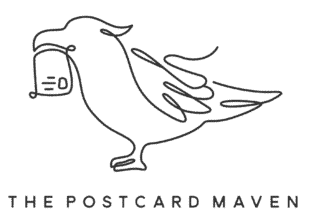Slow Lifestyle
10 Ways to Embrace Slower Living
From slow food to slow parenting and slow fashion to slow travel, the slow living movement continues to reach ever more people realizing they’re ready to slow down.
In the words of Carl Honoré, author of In Praise of Slow, the slow movement “is a cultural revolution against the notion that faster is always better. The Slow philosophy is not about doing everything at a snail’s pace. It’s about seeking to do everything at the right speed. Savoring the hours and minutes rather than just counting them. Doing everything as well as possible, instead of as fast as possible.”
As someone who prefers handwritten over digital communication, among many other slow lifestyle choices, I’ve been working to embrace more elements of slowness and intentionality in my own life, particularly over the past few years.
Below, you’ll find a list of 10 of the best ways I believe everyone can find more slowness, presence, and satisfaction in the course of their everyday lives. Which are you most inclined to try?
Grow your own food.
Whether it’s a few fresh herbs in a windowsill box or a series of raised beds reclaiming the utility of your front yard, growing plants of any kind is a beautiful seasonal pursuit that recalibrates the speed at which we live our lives. It necessitates paying attention to the slow and deliberate passing of each phase of growth that begets new plant life.
The advent of the slow food movement was arguably the initial spark for a broader push toward slower living in general, and as food is such an integral part of everyone’s everyday life, I believe it is still one of the best places to start living more slowly.
While you’re at it, grow your own flowers too! Being able to bring a bouquet of slow beauty from the outside world in with you whenever you wish is such a treat.
Sit.
There’s a reason many mindfulness teachers refer to the practice of meditation simply as “sitting.”
Distilling the array of things you feel you need to be doing right now down to simply existing in space is one of the most powerful possible ways to slow your mind and slow your life.
In simply sitting, breathing, and letting the world carry on around you, you reaffirm the truth that it is possible to decouple being from constantly doing.
Nap.
Some of us nap, and some of us don’t—but all of us could and probably should.
It’s at the times when we feel like we have no time to rest that rest is most important for us to prioritize. Waking up with a clear mind opens so many doors that exhaustion keeps closed—and these are precisely the kinds of doors that enable improved mental health, clearer problem solving and critical thinking, and the ability to register the simple beauty of the world around us.
To get inspired, Tricia Hersey’s Rest Is Resistance is a book that anyone who has ever begun to feel deeply exhausted by the relentless pace of capitalism should read. It is an ode to the power of rest, and a manifesto calling on all of us to reclaim our divine right to it.
Read.
Don’t power through the literary classics you feel you ought to have read by now—rediscover the quiet joy of reading the books that truly draw you in, at your own pace.
Sometimes being able to step outside of our own internal narratives and immerse ourselves in another story entirely also lets us come back and look at the stories we’re telling ourselves with fresh eyes.
Replace posts with postcards.
Handwriting paper mail lets us be completely intentional about who we’re sharing a message with and why. We can enjoy the process of picking out the perfect card, decorate the margins with doodles if we’re feeling creative, and choose exactly the right words to make the recipient’s day.
And then, we can send it out into the world and forget about it—no need to reread that message later and wonder how other people perceived it, or check back to reply to comments, or second-guess your words and delete them.
To me, there’s nothing more relaxing than a lazy, languid afternoon writing and mailing postcards to friends over a cup of coffee, my phone powered down for the day. In an ever-mounting onslaught of emails, texts, posts, comments, and Tweets, I’d encourage anyone exhausted by those little red notification icons to remember that there are other ways to communicate with the people you care about most—and they’re a lot less likely to lead you into yet another anxious hour of involuntary doomscrolling.
*Rediscover the joy of slow messaging—sign up for a curated monthly postcard subscription from The Postcard Maven here.
Birdwatch.
There’s been a swelling resurgence of this widely loved pursuit in the past few years, and I am just one of many of my friends to have been caught joyfully up in it.
Once you start watching birds, and really noticing the beauty of what they are and what they’re up to, you’ll never be able to stop! Pretty soon you’ll find yourself pausing far more frequently along the hiking trail or in between errands to try to catch a glimpse of something natural and beautiful.
Work with your hands.
Whether it’s weaving a basket from foraged vines or sewing your own clothing, there are so many traditional handicrafts that most of us have forgotten how to do—the sorts of pursuits that our grandparents and great-grandparents might have spent an entire day working on at a time, which offers a chance to relax into repetition and let your mind wander freely while your hands work.
Making time for a methodical creative pursuit helps us reset the pace of our day-to-day to-do’s and appreciate the slow process of creating something worth keeping.
Use what you have.
It’s so easy to get caught up in the cycle of consumption—in fact, it’s what most of us have been primed for our whole lives.
Whether you’ve accumulated the supplies for an overwhelming amount of DIY projects or have more food than you know what to do with stuffed into your refrigerator, make a point of working through the things you already have before you go out to the store and buy more.
Making use of whatever you have sparks creativity, helps keep your personal space and your mind decluttered, and lets you save more money for the things you care most about.
Slow exercise.
Mindfulness and physical activity are two of the most surefire ways to help us quiet our minds and look on the world with a fresh perspective. Combine the two, and their powers of reinvigoration seem to augment one another.
Often we’re told that in order to exercise, we need to be pushing ourselves to the limit—whether that means pumping iron or running to the point of physical exhaustion.
But slower, more meditative forms of exercise like yoga, hiking, swimming, and paddleboarding all have the power to bring us into a flow state where we can think more clearly and creatively while benefiting physically at the same time.
Exercise doesn’t have to be something you dread; and as you embrace slower living and learning to make the most of every moment, you’ll begin to realize that it probably shouldn’t be.
Daydream.
Most of us had the sense that daydreaming was an acceptable way to spend our time quashed from the earliest days of elementary school.
“Why aren’t you paying attention? Stop daydreaming.” It may have been the first thing you ever got in trouble for.
Paying attention to the things that matter most to you is important, but in order to practice slow living, we need to unlearn the feeling that we need to pay attention to everything put in front of us.
Small payments of attention are constantly being demanded by the junk mail, emails, advertisements, and other unwanted missives put in front of us by people who don’t make a profit if we spend our days daydreaming.
Resist these demands on your attention by making daydreaming an intentional practice. Set aside time for it. You’ll be richly rewarded by the possibilities you’ll soon find yourself capable of imagining for your own life as soon as you make the space.







